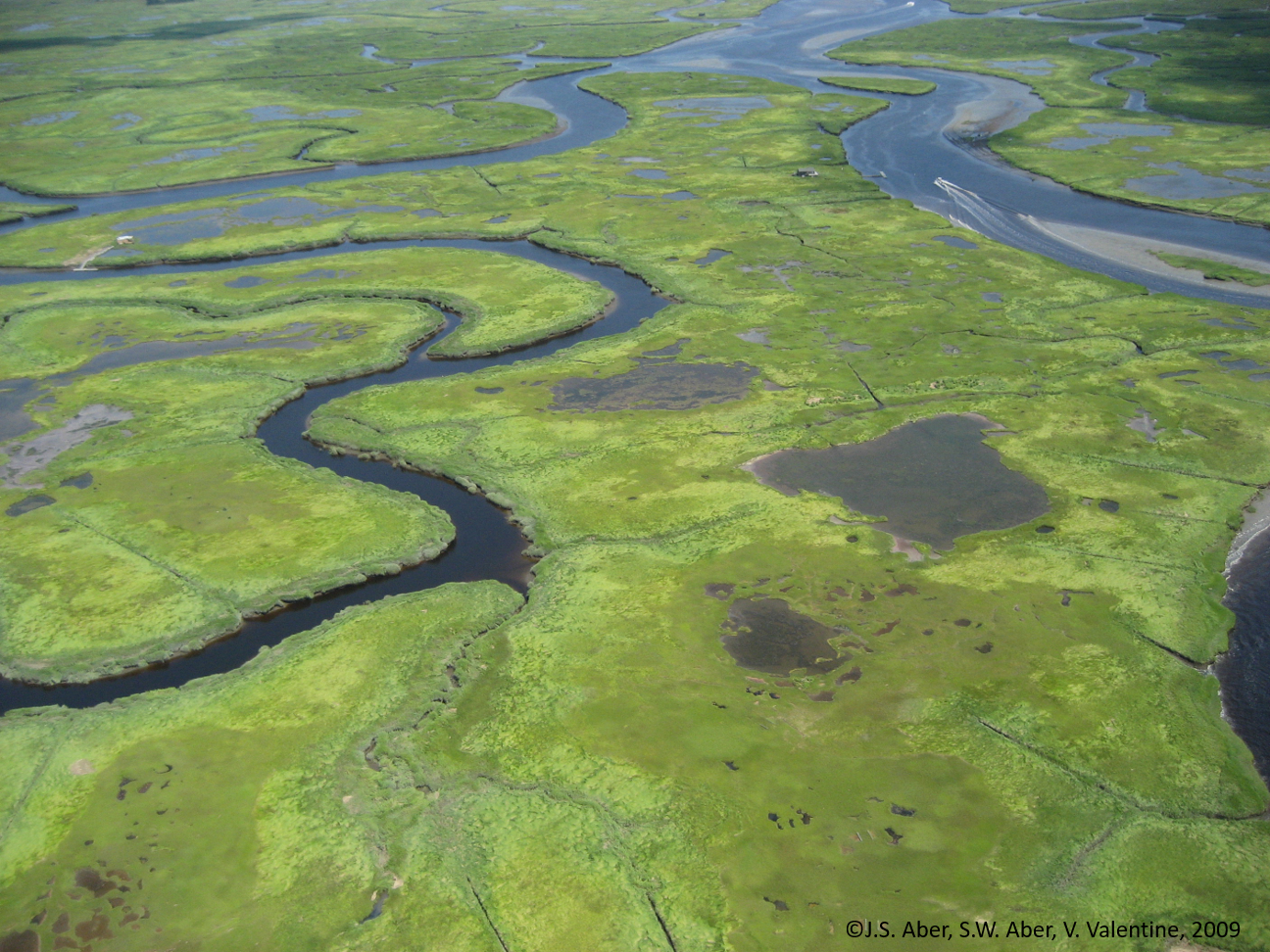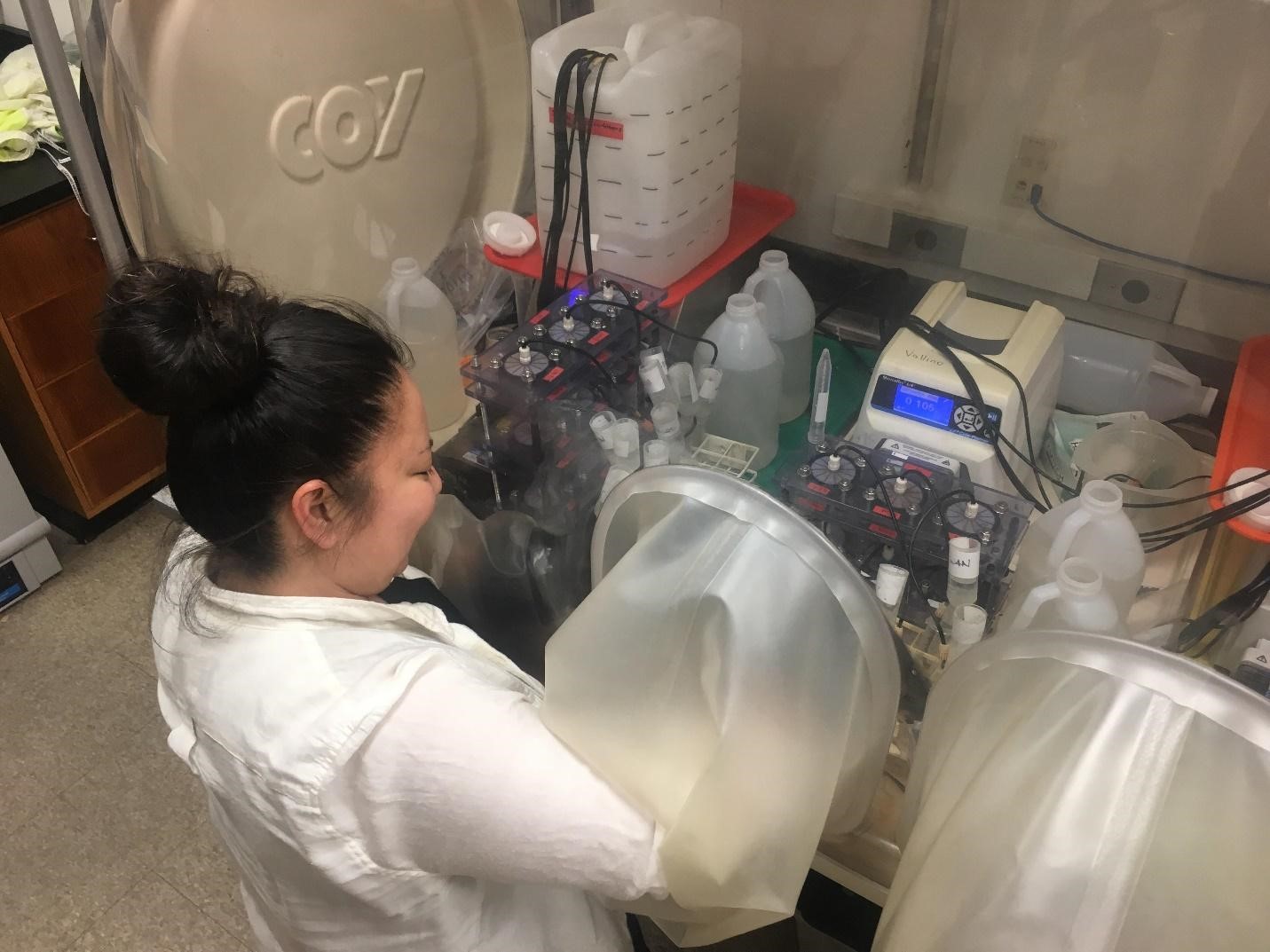Salt Marshes' Capacity to Store Carbon may be Threatened by Nitrogen Pollution

Contact: dkenney@mbl.edu; 508-685-3525
WOODS HOLE, Mass. – Deep in the waterlogged peat of salt marshes, carbon is stored at much greater rates than in land ecosystems, serving as an offset to climate change due to carbon dioxide (CO2) build-up in the atmosphere.
However, a new study indicates that a common pollutant of coastal waters, nitrate, stimulates the decomposition of organic matter in salt marsh sediments that normally would have remained stable over long periods of time. This increase in decomposition, which releases CO2, could alter the capacity of salt marshes to sequester carbon over the long term. The study, led by scientists at the Marine Biological Laboratory (MBL), Woods Hole, and Northeastern University, is published in Global Change Biology.
 Salt marshes sequester carbon at rates more than an order of magnitude greater than their terrestrial counterparts. Core samples for this study where taken from this marsh in Rowley, Mass., part of the Plum Island Ecosystems NSF-LTER site. Credit: Aber, Aber, and Valentine 2009.
Salt marshes sequester carbon at rates more than an order of magnitude greater than their terrestrial counterparts. Core samples for this study where taken from this marsh in Rowley, Mass., part of the Plum Island Ecosystems NSF-LTER site. Credit: Aber, Aber, and Valentine 2009.“Traditionally, we have viewed salt marshes as resilient to nitrogen pollution, because the microbes there remove much of the nitrogen as gas through a process called denitrification,” writes first author Ashley Bulseco, a postdoctoral scientist at the MBL.
“But this research suggests that when nitrate is abundant, a change occurs in the microbial community in salt marsh sediments that increases the microbes’ capacity to degrade organic matter. This potentially reduces the ability of the marsh to store carbon,” Bulseco writes.
 Ashley Bulseco, pictured, and co-authors used a controlled flow-through reactor experiment to determine how nitrate affected organic matter decomposition and microbial community structure in salt marsh sediments. Credit: MBL Ecosystems Center
Ashley Bulseco, pictured, and co-authors used a controlled flow-through reactor experiment to determine how nitrate affected organic matter decomposition and microbial community structure in salt marsh sediments. Credit: MBL Ecosystems CenterAs global temperatures continue to rise, a number of carbon capture strategies have been proposed, including sequestering CO2 in “blue carbon” habitats such as salt marshes, mangroves and seagrass meadows. However, coastal nitrogen pollution is also still rising in many areas due to agricultural and urban runoff, and sewage.
“Given the extent of nitrogen loading along our coastlines, it is imperative that we better understand the resilience of salt marsh systems to nitrate, especially if we hope to rely on salt marshes and other blue carbon systems for long-term carbon storage,” the authors write.
The next phase of this research, already in progress, is to analyze the microbial community responsible for degrading carbon in a salt marsh ecosystems, especially when exposed to high concentrations of nitrate.
Among Bulseco’s co-authors are Jennifer Bowen, professor of marine and environmental sciences at Northeastern University, and Anne Giblin, director of the Ecosystems Center at the MBL, who were her PhD advisors.
Citation:
Ashley N. Bulseco et al (2019) Nitrate addition stimulates microbial decomposition of organic matter in salt marsh sediments. Global Change Biology, DOI: 10.1111/gcb.14726
—###—
The Marine Biological Laboratory (MBL) is dedicated to scientific discovery – exploring fundamental biology, understanding marine biodiversity and the environment, and informing the human condition through research and education. Founded in Woods Hole, Massachusetts in 1888, the MBL is a private, nonprofit institution and an affiliate of the University of Chicago.